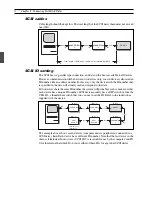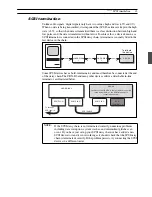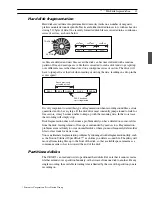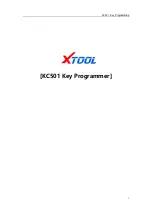
CBX-D3 Terminology3
CBX-D3 Terminology3
CBX-D3 Terminology
3
2 CBX-D3 Terminology
SCSI
SCSI (pronounced “scuzzy”) stands for Small Computer System Interface. The SCSI is a
standard format for connecting a computer to peripheral devices such as hard disks,
printers, and scanners. Devices are connected in a daisy chain, with each device (including
the computer) identified by a SCSI ID between 0 and 7.
Your CBX-D3, your computer, and your hard disk are connected together in a SCSI daisy
chain. The CBX-D3 uses the SCSI connection to transmit audio data to or from the hard
disk for recording or playback. The computer uses the connection to send control data to
the CBX-D3, and to perform copy, delete, and backup operations on the hard disk. With
appropriate software, it is also possible to transfer digital audio data directly to your
computer for onscreen waveform editing or other processing.
Although the SCSI standard is fairly robust, some care must be taken when connecting and
setting up the devices. For details about how to connect hard disk drives, refer to page 10.
Sound files
Just like other types of computer data, digital audio data is stored in files — sound files.
When recording starts, a sound file is created on the hard disk. Sound files can be named,
copied, or deleted just like any other computer files.
Sampling frequency
During the analog to digital conversion process, the level of the analog audio signal is
sampled (measured) many times per second.
Each of these sample measurements is then stored as a 16-bit binary value. For digital to
analog conversion (playback), these 16-bit binary values are used to reconstruct the analog
audio signal. The rate at which these sample measurements take place is called the
sampling frequency. CD players use a sampling frequency of 44.1kHz.
The CBX-D3 can record audio using any one of four sampling frequencies: 48kHz,
44.1kHz, 32kHz, and 22.05kHz. The audio quality (bandwidth) of a digital system is
directly affected by the sampling frequency. Essentially, the audio bandwidth will be
roughly half the chosen sampling frequency. Refer to the discussion of sampling frequency
in the chapter on “Recording” (see page 16) for additional details.










































